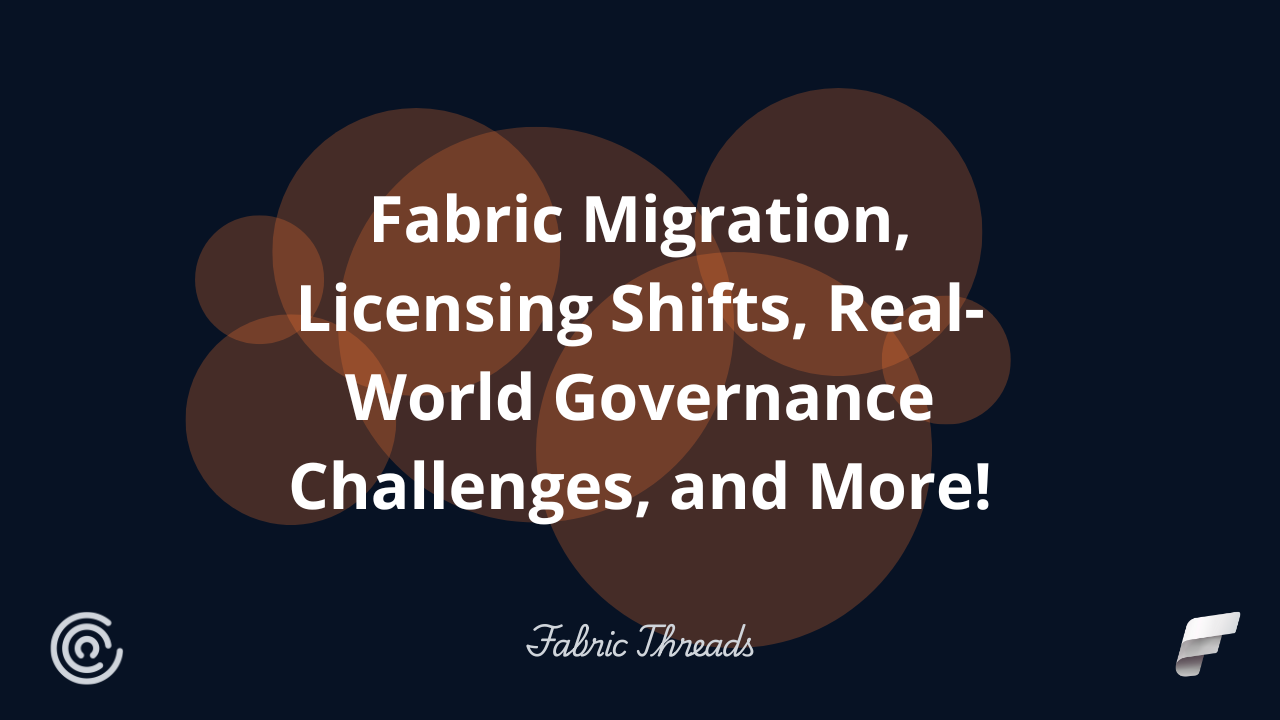A state agency struggling with fragmented data, manual reporting, and siloed departments is a scenario all too common in the public sector. This blog explores how a governed data architecture for government can break down silos and enable proactive, insight-driven decision-making. By centralizing data in OneLake, standardizing metrics through semantic models, and enabling real-time insights with Power BI, agencies can shift from reactive reporting to proactive governance. A strong workspace strategy, embedded security, and analyst upskilling make the solution scalable and sustainable. Collectiv brings the expertise to make it work turning chaos into clarity for government data teams.
A recent client, an agency within a large state government, came to us with a familiar challenge: performance data was spread across dozens of departments, living in spreadsheets, disconnected databases, and inconsistent reporting platforms.
This problem wasn’t new to us. In fact, we see it constantly across the public sector.
Agencies are working harder than ever to deliver on transparency, accountability, and efficiency, yet their data infrastructure makes it nearly impossible. With outdated tools and siloed systems, even answering simple questions like “How are we performing against our goals?” can require days of manual effort.
In this case, their teams were stuck chasing down data from siloed systems, with each department managing its own reporting tools. There was no unified environment, no consistency in metrics, and no real-time visibility into performance.
The result? Reporting delays, duplicated effort, and leadership flying blind on critical decisions.
This Isn’t Just One Agency; It’s a Public Sector Pattern
What we saw in this agency is something we’ve seen across many others. Disconnected systems and manual reporting are not just inefficiencies, they’re risk factors.
In government, the stakes are high: budget oversight, legislative compliance, and public transparency all depend on accurate and timely data. When those foundations are shaky, trust and performance suffer.
The public sector needs more than just new dashboards. It needs a shift in strategy from fragmented, department-specific tools to centralized, governed platforms that support enterprise-wide insight.
The Solution: A Governed Data Architecture for Government with Microsoft Fabric
The solution lies in designing a modern data architecture that prioritizes scalability, governance, and cross-department collaboration. Microsoft Fabric provides the backbone for this transformation.
By leveraging Fabric’s OneLake architecture, state agencies can consolidate structured and unstructured data across every program area into a single, secure, and governed lakehouse. This eliminates data duplication and streamlines ingestion from multiple sources; finance, operations, human services, and more.
A unified lakehouse also enables the development of certified, reusable semantic models that standardize key performance indicators and calculations. Instead of reinventing the wheel in each department, teams can align around shared definitions and eliminate reporting inconsistencies.
Power BI acts as the visualization layer, making it easy for both executives and program staff to explore insights in real time. With built-in support for Microsoft Purview and native integration with Azure Data Factory, agencies can maintain data lineage, enforce privacy rules, and automate governance across the board.
This isn’t a one-size-fits-all deployment. Each agency has different operational realities and regulatory constraints, so a flexible, modular Fabric setup allows for incremental adoption without disruption.
Why It Works: Process-Driven Design, Not Just Technology
A successful deployment goes beyond technology and requires intentional alignment with business processes.
One critical success factor is workspace strategy. Instead of setting up isolated environments for each department, a tiered workspace architecture can be established:
- Enterprise Workspace for shared semantic models and certified datasets.
- Department Workspaces for local reporting needs that inherit enterprise governance.
- Sandbox Workspaces for ad hoc analysis, experimentation, and prototyping without risk to core assets.
This layered approach allows departments to maintain autonomy while ensuring consistency in reporting and security standards.
Another key component of this plan is a structured training initiative. Following implementation, user training is critical to ensure that agency staff not only understand the new system but are fully equipped to use it effectively. This includes hands-on Power BI workshops, Fabric workspace navigation, and self-service reporting best practices, tailored to different user roles across the organization.
Coupled with role-based access controls and centralized security management, this strategy enables broad adoption without compromising data integrity.
Upskilling is another essential piece. When analysts and program leads are empowered to build reports within governed environments, data becomes a strategic asset not just an IT output.
Outcomes That Scale Across Government
By adopting this approach, state agencies can:
- Consolidate dozens of manual reports into centralized, real-time dashboards
- Standardize performance metrics across all programs with shared semantic models
- Accelerate responses to legislative and executive inquiries by reducing reporting lead times
- Reduce infrastructure and licensing costs through efficient capacity management and workload distribution
Recent Microsoft research shows that organizations using Microsoft Fabric experience up to 60% reduction in time spent managing data infrastructure, freeing teams to focus on higher-value analytics.
Most importantly, this architecture supports a cultural shift from fragmented, reactive reporting to proactive, insight-driven governance. A well-executed governed data architecture for government is foundational to this shift.
Why Collectiv? Because We’ve Been Here Before
Public sector data challenges are unique; complex reporting hierarchies, regulatory requirements, and cross-department collaboration demand a tailored approach. Collectiv brings deep expertise not just in Microsoft tools like Fabric, Azure, and Power BI but in applying them to real-world government use cases.
We’ve helped agencies unify data environments, reduce reporting lead times, and create sustainable BI ecosystems that drive better public outcomes.
If your agency is struggling with fragmented data systems and reactive reporting cycles, it’s time to think bigger. With the right architecture and the right partner, your agency can implement a governed data architecture for government that delivers long-term value.




